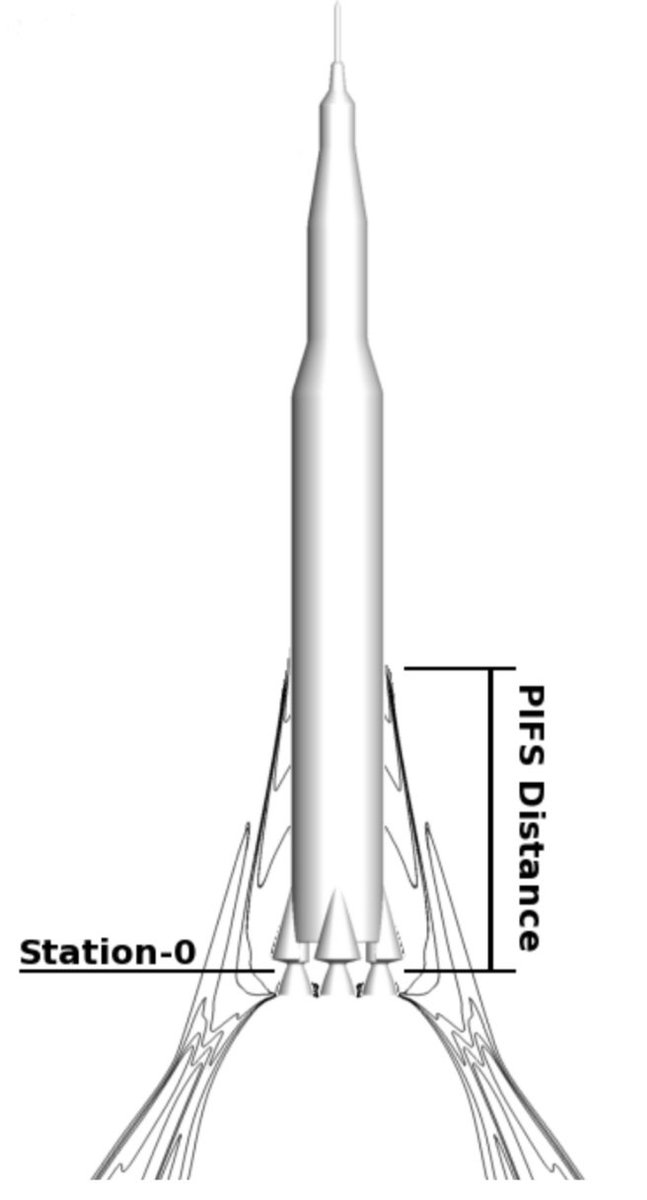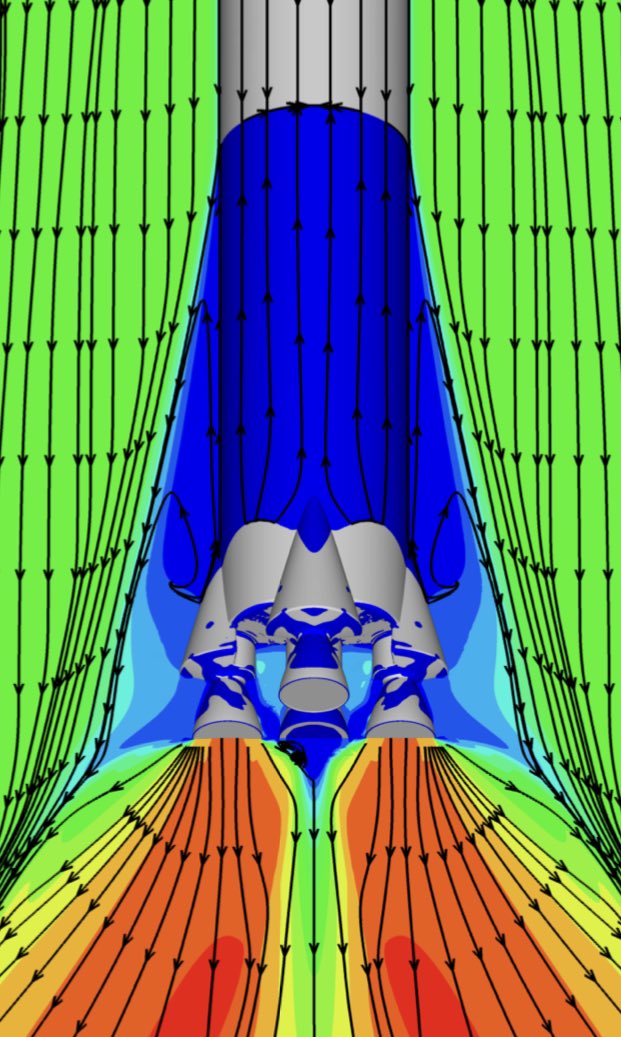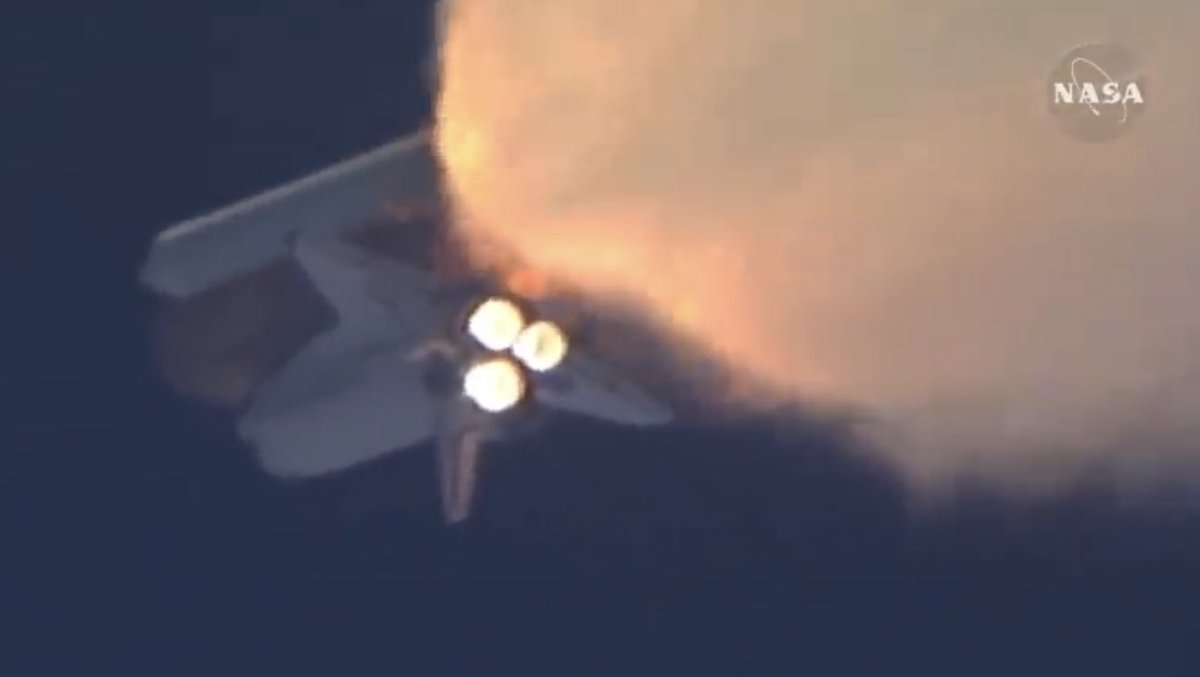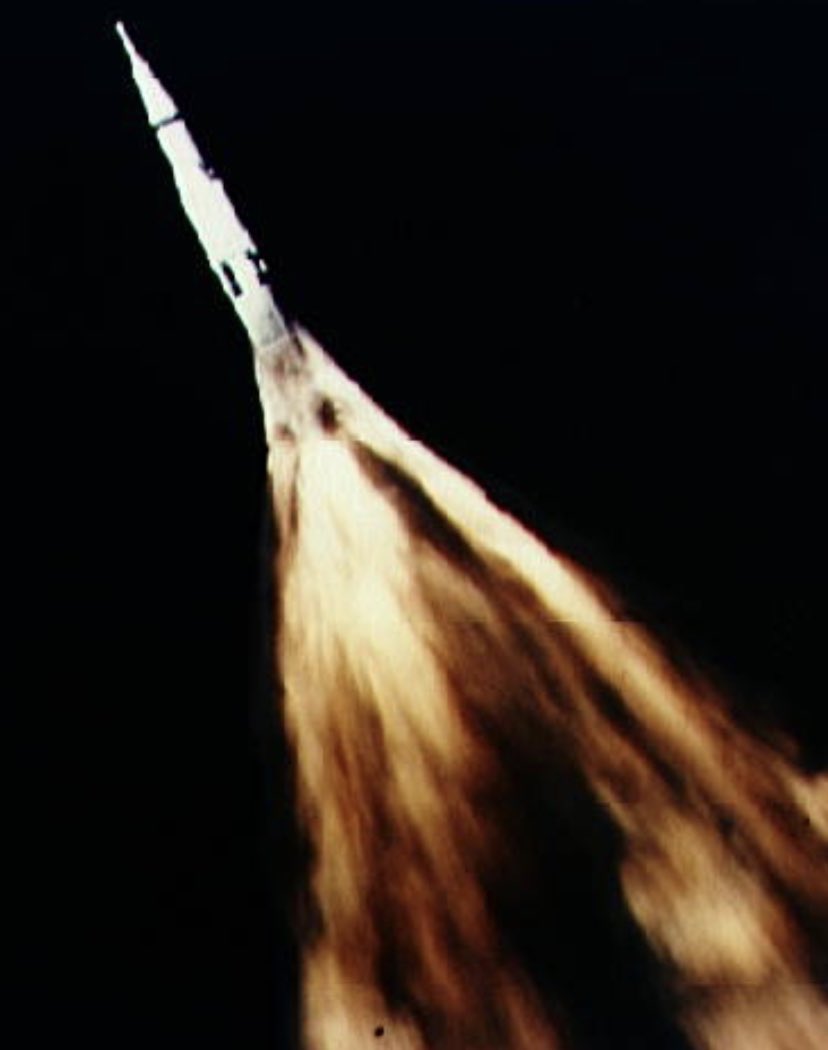Great question from @Geopilot on this @pilliarscreatio post: why does the exhaust plume impinge on the aft portion of the Saturn-V first stage in the photo below?
Let’s talk supersonic fluid physics! #AvGeek (mini-thread) https://twitter.com/pilliarscreatio/status/1283685405628551169">https://twitter.com/pilliarsc...
Let’s talk supersonic fluid physics! #AvGeek (mini-thread) https://twitter.com/pilliarscreatio/status/1283685405628551169">https://twitter.com/pilliarsc...
This is a phenomenon known as “plume-induced flow separation” (PIFS) and NASA engineers definitely accounted for this in the design.
Here’s a schematic from an @AIAA conf. paper by Klopfer et al. @NASAAmes with an overview of what’s happening. I’ll explain...
Here’s a schematic from an @AIAA conf. paper by Klopfer et al. @NASAAmes with an overview of what’s happening. I’ll explain...
The 1st thing to know is that at high alt. like this the air pressure gets quite low relative to the rocket exhaust pressure, putting us in a regime known as “under-expanded jet” flow where the outside air isn’t pushing on the plume as much as at sea level, so it expands rapidly
Combine this with the high velocity of the rocket (M > ~4) and the oncoming air sees this plume as an obstruction. But at supersonic speeds the air doesn’t have time to get out of the way, so the air flow separates from the rocket and you get a shock wave (black line)
When you have a separated flow region like this, there is generally some region of low-speed, recirculating flow that is actually moving *backwards* or upstream relative to everything else (blue area). In this situation it runs down to the plume & allows exhaust to flow upstream
So this is why you see exhaust up the side of the rocket @ high altitude & vel. NASA engineers accounted for this & appropriate prediction of the separation location is key to proper thermal protection design. My understanding is it happened w the shuttle too but a lesser degree
There’s a lot of good literature on this and recently @NASA has been using PIFS location as a benchmark for CFD modeling because separation point is notoriously hard to get right with computational models. Another @AIAA paper:
https://www.nas.nasa.gov/assets/pdf/Kiris_Gusman_PlumeCFD.pdf">https://www.nas.nasa.gov/assets/pd...
https://www.nas.nasa.gov/assets/pdf/Kiris_Gusman_PlumeCFD.pdf">https://www.nas.nasa.gov/assets/pd...
Also, this is a really nice video from @TechSpatiales with images, footage, & animations showing & describing this phenomenon w examples from Saturn V, Shuttle, Falcon 9, & the Russian N1. Entire video is good but relevant bit starts around 15min: https://youtu.be/yJceyvBKxc0 ">https://youtu.be/yJceyvBKx...

 Read on Twitter
Read on Twitter









